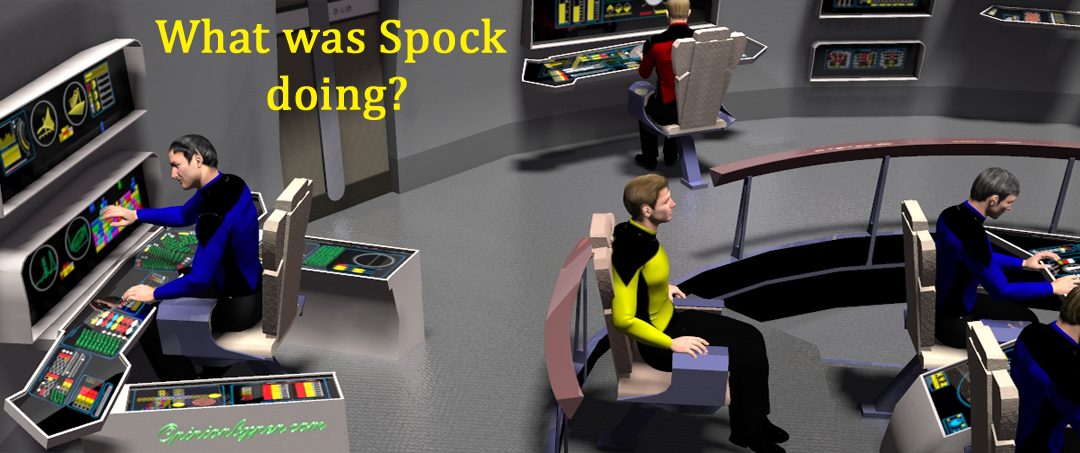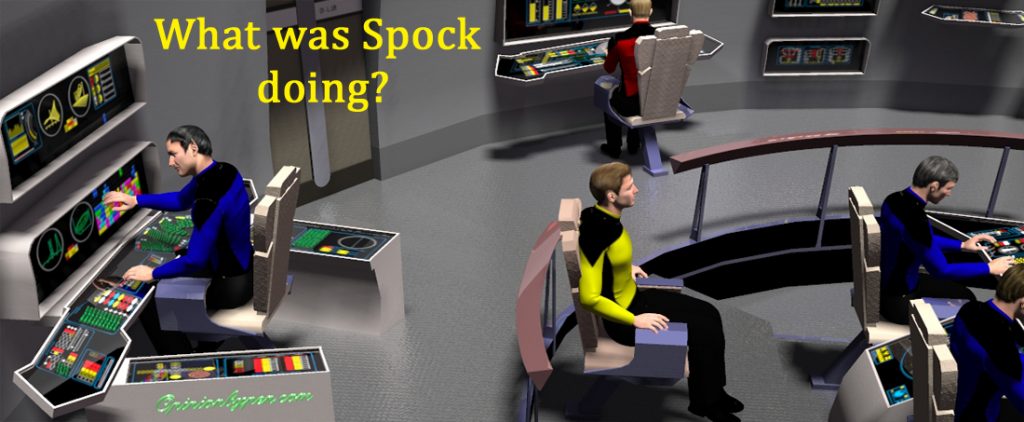The first time I saw Spock turn to Captain Kirk and say, “This plan only has a 5.377 percent probability of success,” I was hooked. Spock was able to use his massive intellect and compute the probability of the Enterprise surviving an encounter with the Romulans to three decimal places. That one action immediately earned Spock a place among my childhood idols. The way we present numbers reveals a lot about us.
Years later, I look back at this and realize that Spock wasn’t displaying intellect, he was having a private joke at Kirk’s expense. Amazing, Spock had a sense of humor and we never saw it.
That’s the thing about numbers, the way we use them, the way we present them says a lot more about us than we think. Yes, the way our Congress men and women announce budgets and massive savings simply says they believe the majority of us are idiots., but that’s not my point. Although if you think about it, they might be right, we allowed them to be voted in.
I started thinking about this because I spent the last few days arguing with a Program Manager about a simple number. It’s not because I’m right and he’s wrong, it’s simply that we see numbers differently. Let me give you an example.
Suppose I say that the probability of a penny landing on tails is exactly 50%. Am I correct? Not quite. If I had said approximately 50%, I would be closer to the truth. But when I say exactly 50%, I’m neglecting to include that almost improbable case of the penny landing on its edge. I’m ignoring the extra weight on the heads side. In reality the probability of the penny land on tails is probably somewhere around 49.999%.
For most of us that 49.999% is close enough to fifty and a great answer. If I had not said exactly 50%. I would’ve been right. That’s the thing about numbers they have a very significant meaning. When you hear that 90% of the wealth is held by 10% of the people do you believe that number?
It sounds good but when you look at the numbers you can see it’s a made-up statistic. The 90% is an arbitrary number chosen to sound impressive. Looking at the 90% as an anchor for the calculations, the 10% looks very suspicious. Somebody wanted an impressive statistic and used 10%. I’m not going to say it’s wrong but how likely is it to be 10%, why not 11 or 9 percent? The answer is simple somebody pulled the statistic out of the air and gave it to you because it sounded good.
Yes, I know one of you will say that since there’s only one significant digit, the actual number could be anywhere between 0 and 19%. You’re right but I want to point out that you’re the only one reading this that understands this distinction.
I hate to sound like someone from the old fogey engineering brigade but back in my day when we used sliderules we had to understand what the numbers were all about and how many digits of significance were there in a number. Don’t get me wrong, I love my Excel spreadsheets, I’ve all but forgotten how to use my slide rule but unless you understand the numbers, a spreadsheet will lie to you.
Based on my cars odometer my driveway is about 1/10 of a mile. After the spring rains it’s lost a lot of gravel. Putting edging on both sides of the driveway would slow the loss down. Because of the curved nature, I use three people to measure my driveway. Always looking for a high-tech solution, I use a laser range finder with a readout in meters (I know it can do yards but I haven’t read the instructions yet), 132 meters. My wife uses a landscaping tape measure accurate to 1/16 of an inch for 166 feet and 3 inches. My neighbor decides on a low-tech solution and paces his section off at 51 paces.
Breaking out the spreadsheet, I convert everything to inches and then divide by 12. That gives me 694.096 feet. What’s the likelihood that fraction of a foot is real? Based on my techniques, I’m going to be amazed if the real number is somewhere between 680 and 729 feet.
When I see an engineer specify a five-foot steel plate to three decimal places, I immediately know I need to check his assumptions. Because steel expands with an increase in temperature, those three decimal places are only accurate over a very narrow temperature range. Spreadsheets will happily take you out to many decimal places but they won’t warn you about thermal expansion.
What does all this have to do with Spock? Think about it, Spock was rigerously trained on Vulcan. He understood significant digits, he understood probability. He knew the accuracy of the Romulan guns compared to the Enterprise’s photon torpedoes. He could calculate the maneuvering ability of both vessels but what were the odds that one of the Romulan gunners was suffering from a massive hangover after a wild night. Did Spock actually have insight into that level of detail?
Well, no. Spock might’ve been able to predict success to one decimal place but the additional decimal places were simply added to impress Kirk with his intellect, knowing Kirk wasn’t smart enough to call it bogus. True, it could have been ego on Spock’s part but he’s still one of my childhood heroes. I prefer to think of it as a practical joke on all of us that believed him. Like I said, the way we present numbers reveals a lot about us. Spock knew exactly what he was saying.
© 2019, Byron Seastrunk. All rights reserved.












Great post! Two comments.
A. Great point about Spock. I never saw it as humor but realize now the half human side of that point….and
B. I hope I’m not the PM because I know I’m wrong rarely, okay occasionally….often…especially with numbers since I’m a “shades of gray” kind of guy